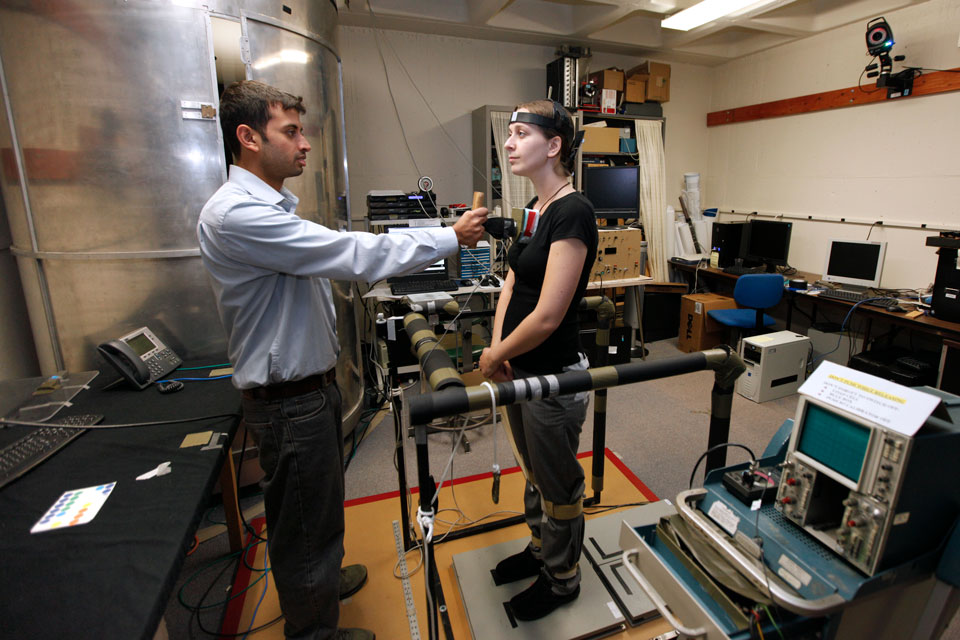Hold and Release

The Hold and Release Paradigm is a technique designed to study the link between the biomechanics of the human body and the physiology, by evoking a transition from quiet standing to a perturbed stance and recovery.
In the hold and release paradigm, subjects actively resist a force applied to their sternum; this force is then suddenly released. The force release provides a planar, pulsatile perturbation that is small enough to evoke postural oscillations from which subjects can recover.
Subjects were tested standing on a force plate with feet side-by-side as they attempted to stand as straight and still as possible. The experimenter then pushed steadily against the subject’s sternum with a dynamometer, ~15 N of force, while the subject actively resisted and maintained an erect posture. The experimenter suddenly and without warning withdrew the dynamometer. The subject then propelled forward by the offset between the CoP and the CoM and attempted to regain balance as quickly as possible without shifting or lifting his/her feet or stepping.
An Optotrak motion analysis system (Northern Digital, Inc.) monitored infrared emitting diodes (IREDs) attached to the subject’s ankle, knee, hip, and shoulder. A Kistler force plate recorded the A-P CoP. An instrumented dynamometer used to apply the holding force to the subject’s chest provided a signal that indicated the precise moment of release. Data channels were sampled at 120 Hz.
With the data collected, our overall goal is to develop a quantitative model, with concrete links to biomechanics and physiology. Continuing research includes conducting the experiment in normal and novel environments.
Reference
- Bortolami SB, DiZio PA, Rabin E, Lackner JR. Analysis of human postural responses to recoverable falls. Experimental Brain Research, 151: 387-404, 2003.